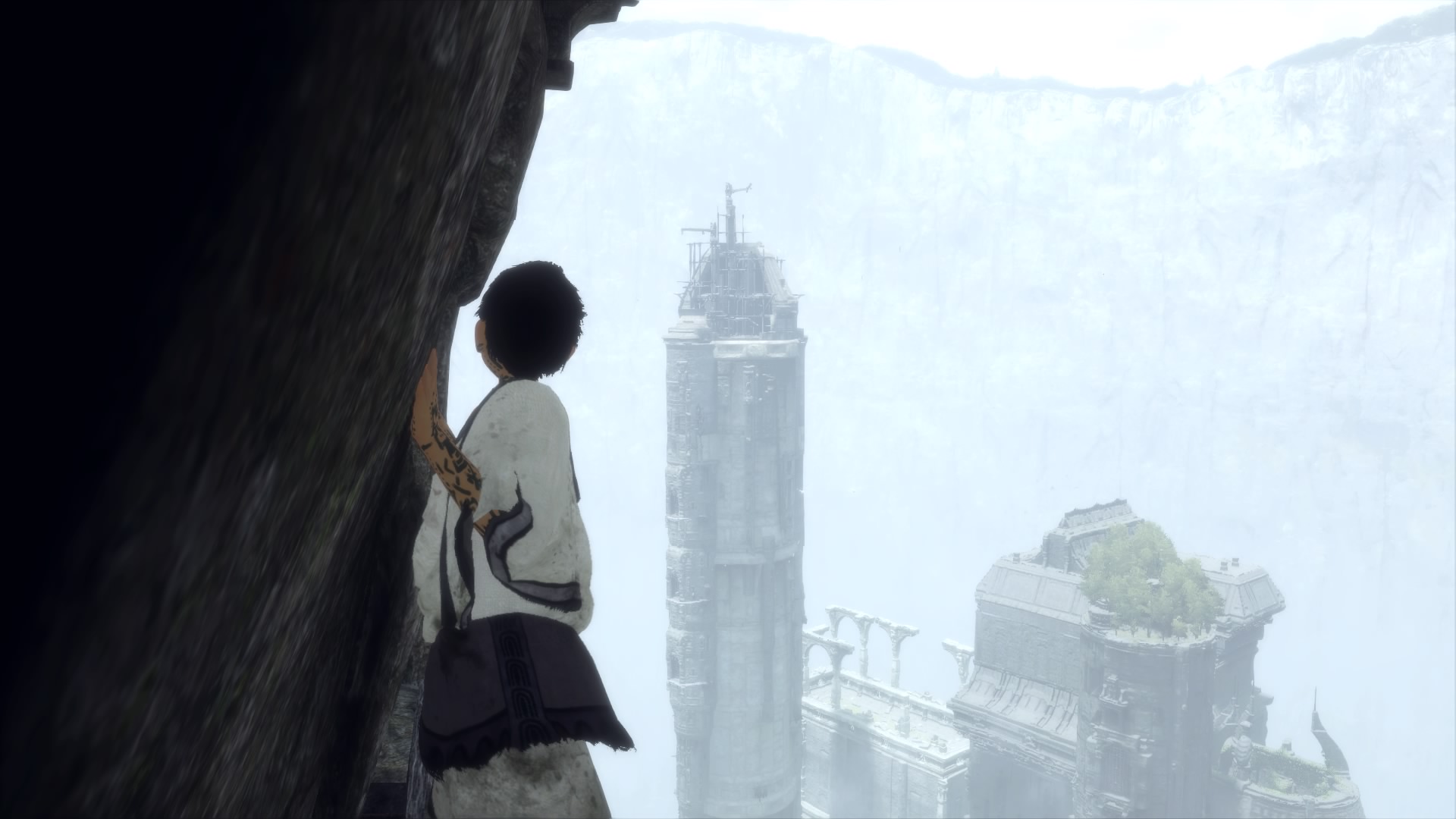This article contains story spoilers for The Last Guardian. Really. Really, really. Don’t read on if you’re playing the game right now, or will be soon, and want it to surprise you in its later stages.
It was never likely to live up to expectations. We all knew that. One of the most anticipated spiritual sequels in living memory was always going to be put under unprecedented scrutiny but, come on, it’s not like The Last Guardian is Duke Nukem Forever, is it?
Videos by VICE
But are we missing the spirit of a game like The Last Guardian when we spend so long lamenting its technical niggles? Are we not skimming over the qualities that shine, such as the story, the art direction and the world building? When we waited almost a decade for it to be released, why hammer through it as fast as possible, grumbling and bawling obscenities because a very small lad sometimes catches his tiny little lad leg on some scenery? To be taken out of the magic so easily is the video game equivalent of hiking the Appalachian Trail and complaining that there’s no Wi-Fi.

All screenshots captured by the author; published courtesy of Sony
I get that some find Trico frustrating and slow, but for me, that gives him an identity. Trico isn’t a performing monkey, he is a “living” animal who gets tired and bored and scared. And there is an added advantage in Trico’s deliberately leisurely pace, as it offers us a chance to study both the creature itself and the breathtaking world we find ourselves in.

And let’s not forget, this is a Team Ico world, steeped in mystery and wonder. From Software’s Hidetaka Miyazaki cites Ico as the game that made him realize what games could be capable of, so it’s no surprise that both the Souls games and the “Ico Trilogy”—that first game, Shadow of the Colossus, and now The Last Guardian—feature landscapes defined by cryptic relics and inscrutable half-clues, faded by the passage of time.
Semi-eroded symbols adorn ruins found in The Last Guardian, their meanings lost forever. All that’s left is to look up at the breathtaking, long-dormant edifices that scream into the sky before us and wonder what they once were. They are structures with a personality, evoking a powerful sense of history. Their magnitude alone demands our quiet respect as we marvel at their construction.




Architecture plays a large part in giving the Ico Trilogy its uniqueness, but the hallmark of the series lies in its treatment of sound and light. Each game marries the contrasts of emptiness and noise using one simple element: the wind. The silence of the dead, or merely the absence of others, is accentuated by the deafening wind, a force that never ceases. It’s a reminder that nature always reclaims, an assertion reinforced by the image of stone structures succumbing to moss and greenery.

Similarly, the use of excessive bloom in outdoor areas helps to communicate a vast, humbling expanse, foretelling of the adventure ahead. As we step out of each ruin, we are blinded by light, and we feel the wonder and trepidation of a young boy lost in an abandoned world, unsure of what awaits him.

Light plays an important role throughout The Last Guardian. As the game nears it conclusion, dusk approaches and Trico sits atop the tower of the Master of the Valley, looking out to the setting sun. The golden, late evening light elicits a sense of the story reaching its end, so I stood and watched him for a while. I felt like he was reminiscing, and that the game was inviting me to reflect and reminisce with him.

Following what was admittedly a pretty crap final boss battle, the art direction of the pre-credits conclusion lends the game’s ending a vital emotional weight. I feel like I’m almost always disappointed by the endings of games, but the way The Last Guardian marries framing and composition with player agency put me in mind of Starbreeze’s 2013 title, Brothers—another title that relies on the relationship between two characters to progress the game. They have comparable endings, too, but I’m not about to spoil two games in the same article.
An injured Trico uses the last of his strength to fend off the frightened villagers as the unconscious boy is cradled in the foreground. The framing puts the boy front and center, reinforcing that this is his story while also highlighting how weak and exhausted he is. Meanwhile, Trico struggles in the background slightly out of focus, indicating to us how distant and helpless both he and the situation seem.
Related, on Waypoint: Discussing ‘The Last Guardian’ with Director Fumito Ueda
The magic comes when player agency is layered on top. The positioning of the boy in the scene offers a gentle hint that you can call out to Trico to send him away. The boy struggles to utter a final command, even if you hammer all the buttons a lot and shout tearfully at the screen. Eventually, though, Trico hears, obeys, and flies away, and the two friends never see each other again. Just like Brothers, a central mechanic used throughout the game acts as an emotional callback to leave you feeling more involved in the final outcome.
The Last Guardian is a game built on its art direction. It tells stories through its architecture, the movement and expression of its characters, and uses light to communicate tone and feeling. While I had my own share of struggles with Trico’s behavior and the game’s occasional poor design choices, I worry that those who were obsessed with analyzing of Trico’s AI routines might have missed or undervalued all the things The Last Guardian does well. For such a long-awaited title, that would be a great shame.








More
From VICE
-

Screenshot: Sony Interactive Entertainment -

Screenshot: IO Interactive -

Screenshot: Shaun Cichacki -

Screenshot: Epic Games
